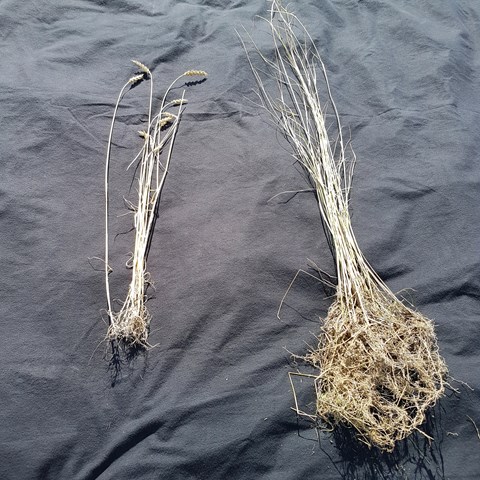Perennial cereal grain production is developing as an agricultural practice globally, including in Europe. Perennial cereal grain production has many similarities to other grass-based production systems and semi-natural grasslands, with larger possibilities to host biodiversity and to provide a carbon sink. Thus, including perennial cereal grain crops in the current agricultural landscape could mitigate the threats agriculture are posing to biodiversity and mitigate the climate change by increasing the sequestration of C into the soil.
At the European level, nature-based solutions have been requested to contribute to a higher level of sustainability in the management of our common natural resources. Perennial cereal grain production may provide such solutions, if it proves to have high resource use efficiency, robustness towards pests and other ecological and climatic challenges, and high competitive ability towards weeds, resulting in a crop low-demanding in resources, such as fertilisers, agro-chemicals and other agro-technological interventions. Perennial cereal grain production systems therefore provide an excellent design to promote nature-based solutions for mitigating global change effects, while maintaining an increased functional agrobiodiversity for a low input food production with social and economic benefits.
The NAPERDIV project aim to introduce perennial grain crops as a nature-based solution for innovative and future-proof agricultural systems in Europe, to move from current crop production towards sustainable alternatives acknowledged by the EU’s agricultural and environmental legislation.
NAPERDIV will answer to the following research questions:
- To what extent will functional biodiversity and interactions develop over years in a perennial grain cropping system?
- How will these biotic changes contribute to crop performance, sustainability by reduction of matter and energy inputs, ecosystem service delivery and resilience against environmental change?
The questions will be answered through analysis of the crop performance under current conditions and under in situ simulated climate change, the crop-associated microbiome and the biodiversity of the soil-borne and soil-dwelling fauna, and cropping system modelling will reveal optimal design of cropping systems with perennial cereal grain crops. NAPERDIV will contribute to an increased awareness about the benefits of perennial grain cropping though stakeholder interactions and dissemination.

